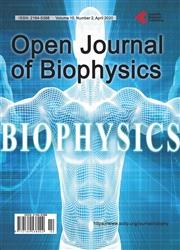The Effects of Tissue Regenerative Status on Hormesis in Dogs Irradiated during Their Lifespan
引用次数: 6
Abstract
The goal of this study was to evaluate the influence of natural variation in the regenerative status of dog tissues on the signs of hormesis, which are evident after total body exposure to low daily doses of external gamma radiation throughout the lifespan. Ninety beagle dogs of both sexes were irradiated with cobalt 60 at 0.003 Gy/day commencing 1 year after birth to death. Control (n = 169) and irradiated animals underwent whole-life clinical observation and autopsy, and were then retrospectively divided into two subgroups with (W) or without benign tumors or tumors of unknown nature (WO) that were clinically recorded on single days throughout the lifespan. Radiation hormesis was only detected in subgroup WO, which had life span (LS) of 10.7 years in the absence of radiation. The radiogenic prolongation of life to 11.8 years in the WO subgroup (p 0.05) was similar to that in the W control and irradiated W subgroups (11.8 and 11.5 years, respectively). The number of solid malignancies found upon autopsy of the control WO subgroup was less (39.5%) than that evident in the control W subgroup (60%). Compared to the irradiated W subgroup, irradiation of the WO subgroup was accompanied by a slight increase (1.14-fold) in the number of solid malignancies evident at autopsy and in the clinical signs of tissue atrophy and body weight loss (2.4-fold and 2.4-fold, respectively), but was accompanied by strong reductions in the extent of anemia and hemoblastoses (>10-fold for both). The data exclude the notion that radiation is associated with healing, but suggest that certain pathologies (e.g., hemoblastoses) may be substituted with other less dangerous somatic diseases in weaker animals only.组织再生状态对狗一生中受辐射后激素的影响
这项研究的目的是评估狗组织再生状态的自然变化对兴奋症状的影响,在整个生命周期中,全身暴露于低剂量的每日外部伽马辐射后,兴奋症状很明显。从出生后1年至死亡,对90只两性比格犬进行0.003 Gy/天钴60辐照。对照组(n=169)和受照射动物接受了终身临床观察和尸检,然后回顾性地分为两个亚组,其中有(W)或没有良性肿瘤或性质未知的肿瘤(WO),在整个生命周期的一天内进行临床记录。辐射刺激只在WO亚组中检测到,在没有辐射的情况下,WO的寿命(LS)为10.7年。WO亚组的放射性寿命延长至11.8年(p 0.05)与W对照组和辐照W亚组(分别为11.8年和11.5年)相似。对照WO亚组尸检发现的实体恶性肿瘤数量(39.5%)少于对照W亚组(60%)。与辐照的W亚组相比,WO亚组的辐照使尸检时明显的实体恶性肿瘤数量以及组织萎缩和体重减轻的临床症状略有增加(1.14倍)(分别是2.4倍和2.4倍),但同时贫血和血母细胞增多症的程度显著降低(两者均>10倍)。这些数据排除了辐射与愈合有关的概念,但表明某些病理学(如血母细胞增多症)可能仅在较弱的动物中被其他危险性较低的躯体疾病所取代。
本文章由计算机程序翻译,如有差异,请以英文原文为准。
求助全文
约1分钟内获得全文
求助全文

 求助内容:
求助内容: 应助结果提醒方式:
应助结果提醒方式:


